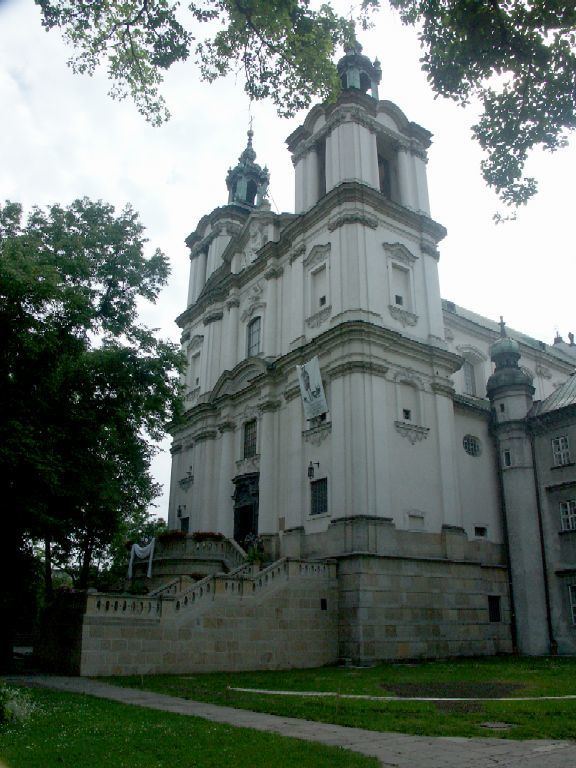 | ||
Church of St Michael the Archangel and St Stanislaus Bishop and Martyr and Pauline Fathers Monastery, Skałka, which means "a small rock" in Polish, is a small outcrop in Kraków where the Bishop of Kraków saint Stanislaus of Szczepanów was slain by order of Polish king Bolesław II the Bold in 1079. This action resulted in the king's exile and the eventual canonization of the slain bishop.
Originally, a Romanesque church was built there. King Casimir III raised a new gothic church in its place and since 1472 this shrine has been in the possession of a monastic community of Pauline Fathers. In 1733-1751 the church received a baroque decor. It is one of the most famous Polish sanctuaries.
The crypt underneath the church serves as a "national Panthéon", a burial place for some of the most distinguished Poles, particularly those who lived in Kraków.
